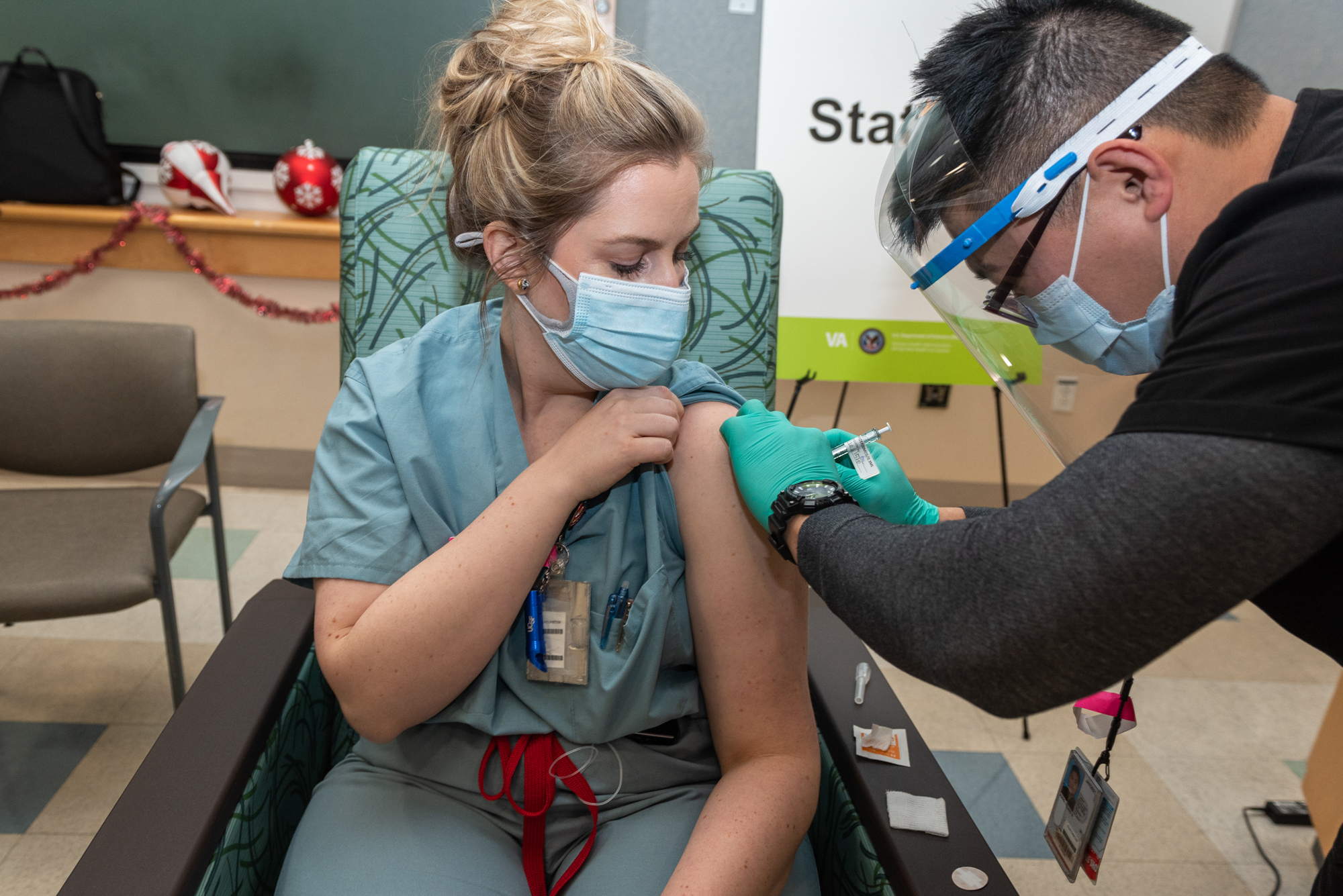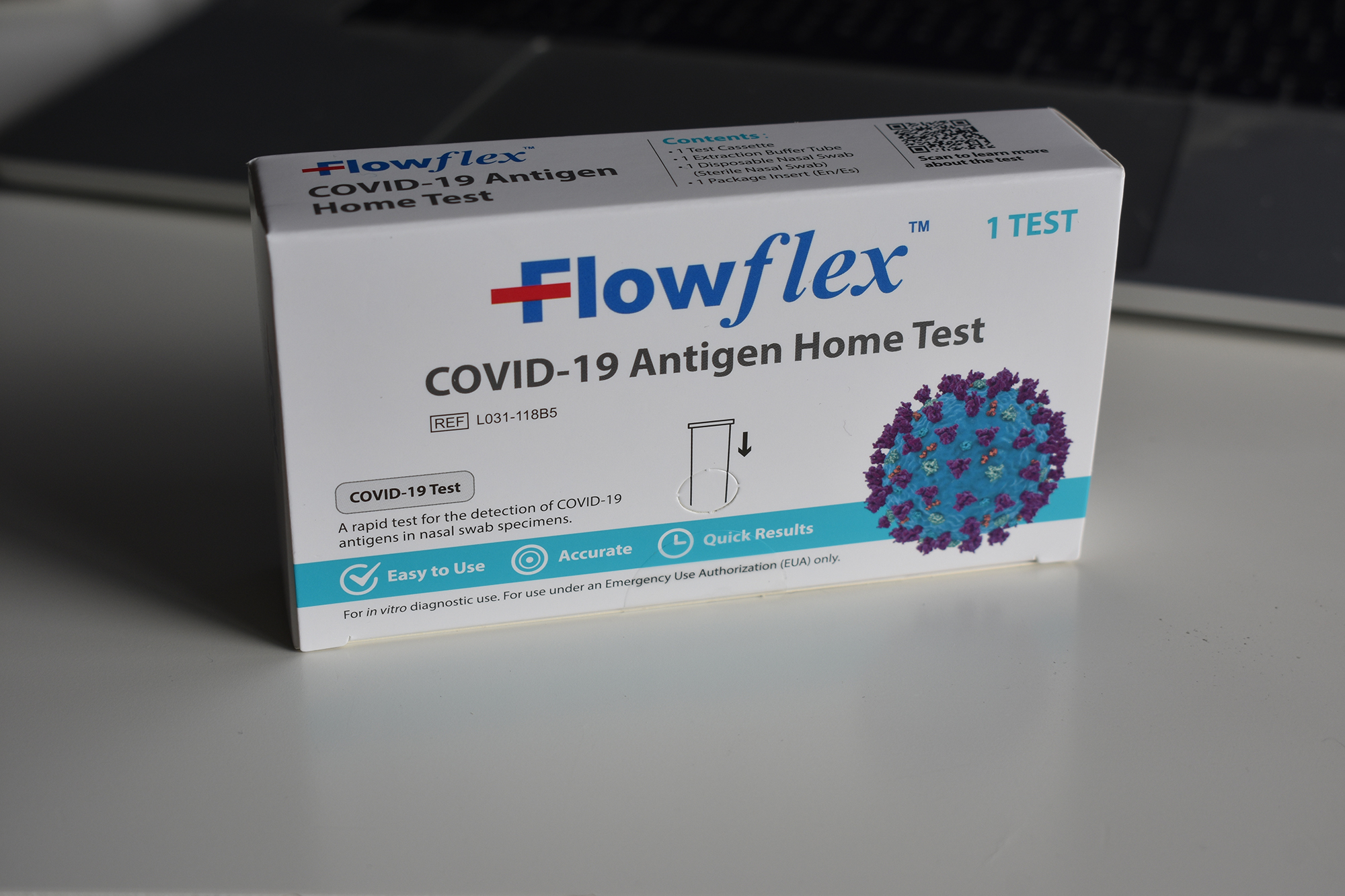COVID-19 cases detected in Palo Alto hit an unprecedented high last week, according to wastewater monitoring from Santa Clara County.
County public health officials reported that COVID-19 levels began climbing in December, and in Palo Alto on Tuesday, Jan. 2, the amount of the virus detected in wastewater, the best method for tracking the virus, peaked at a (marginally) higher level than it ever has when compared to previous years.
Officials say the spike – driven by holiday travel, waning public health precautions and the new dominant JN.1 variant – coincides with a rise in other respiratory diseases like the flu and RSV, so officials are warning the public to take the proper precautions.
“This is the time, the beginning of January, where we kind of expect to see higher levels, and that's exactly what we are seeing in our wastewater data, not only for COVID, but also for other respiratory viruses,” said Monika Roy, an assistant health officer and communicable disease controller for the County of Santa Clara Public Health Department.
While the number of cases detected in sewage has grown, the number of people going to the hospital to treat COVID has fallen. Nationally, about 30,000 were hospitalized the week after Christmas Day in 2023, compared to 97,000 the same week in 2022, according to the Centers for Disease Control and Prevention. In California, that number for the same period was 3,516 in 2023 and 6,140 in 2022 (the CDC doesn’t track countywide hospitalizations year over year).
But despite recorded cases hitting a new peak in Palo Alto, it may be more difficult to get your hands on resources like tests or vaccines. That’s largely because the federal government ended the COVID-19 federal emergency in May, leading to a drop in free and subsidized resources available to the public, which were once widely available during the height of the pandemic.
California shuttered many of its state-supported test centers last winter as it ended its emergency in May. Stanford, which handed out free PCR test kits to staff, faculty and students, ended its program in March (though at the time of its test sunsetting, the school said it would still provide free antigen testing for university-affiliated people).
So, finding a test is tough. Many of the test sites have closed, with a few scattered across the Peninsula still open. Most pharmacies and drug stores sell COVID-19 tests, but those can put you back anywhere from $5 to $25. For free tests, the Better Health Pharmacy in San Jose hands out four take-home tests per person and is open 10:30 a.m. to 7 p.m. Tuesday through Friday and 8:30 a.m. to 5 p.m. on Saturday.
To find a COVID-19 vaccination, the CDC has a database you can search for locations offering the most recent iteration of the booster. In Palo Alto, the Walgreens at 4170 El Camino Real and at 2605 Middlefield Road, as well as the CVS Pharmacies at 352 University Ave. and the CVS at 855 El Camino Real, all had vaccines in stock as of Friday, Jan. 5. The pharmacies recommend you book an appointment ahead of time.
If you don’t have insurance, in September, the U.S. Department of Health and Human Services launched the Bridge Access Program, which offers uninsured individuals free COVID-19 vaccines. To find a pharmacy that offers vaccines or one participating in the Bridge program, visit the CDC’s vaccine locator vaccines.gov.
For kids who are uninsured, the Vaccines for Children Program can show pharmacies where they can also get the jab for free.
For those who are at higher risk for serious infection, both Santa Clara County and the CDC recommend that individuals take Paxlovid, a Pfizer drug, within the first five days of COVID-19 symptoms. It has been show to be highly effective at quashing the virus. Officials approved the drug for those who are at high risk for severe COVID-19, who tend to be those over 65, or who have other conditions like obesity or asthma.
“The earlier they get Paxlovid, the better,” Roy said. “That reduces their chance of being severely ill, hospitalized and dying.” To get the drug, reach out to your health care provider.



Comments
Registered user
Jackson Park
on Jan 8, 2024 at 5:19 pm
Registered user
on Jan 8, 2024 at 5:19 pm
“While the number of cases detected in sewage has grown, the number of people going to the hospital to treat COVID has fallen.” So perhaps rather than alarmist headline, it would be better say “Despite increased presence in water, COVID hospitalizations are falling”